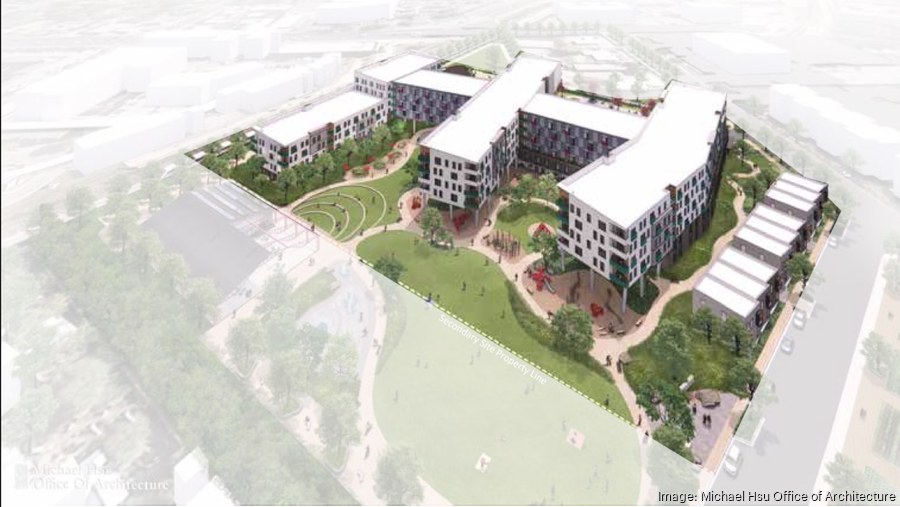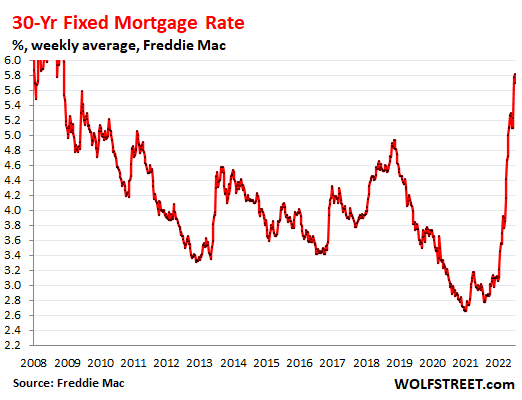Hundreds of multifamily units, offices planned for Crestview neighborhood

A revised vision for Crestview Village first introduced two years ago is taking shape as plans gain momentum to build a high-density, mixed-use development with affordable housing near a transit hub in North Austin.
Owned by brothers Ben Barlin and Peter Barlin, 3423 Holdings LLC gained the Austin Planning Commission’s recommendation on Oct. 24 to seek an increased building height to 160 feet — about 15 stories — and participate in the city’s density bonus program, which will yield at least 10% dedication to affordable housing.
If brought to fruition, the project would help the city’s goals for denser, transit-focused development along its primary corridors. It would also help Austin reach its net-zero community-wide greenhouse gas emissions by 2040 while providing more affordable housing options — another longstanding hurdle for the local government.
The mixed-use development is planned to rise on three acres at the intersection of Justin Lane and North Lamar Boulevard. The site currently houses single-story, car-oriented commercial buildings, including tenants such as Dia’s Market LLC, Nugent Grocery Inc., Davo’s Auto Repair & Service LLC, KibRoh Construction LLC and structural engineering firm Structures PE LLP.
The site is adjacent to the Crestview train and bus stations, providing access to six bus routes as well as a planned potential stop for the city’s new light rail service that would serve new parts of Central Austin. The stop may be included in the first phase of the city’s light rail plan if additional funding can be secured.
The project exists as a truncated version of what was originally intended as a larger mixed-use development on a more extensive 5.5-acre footprint. It would have combined two properties owned by the developer with a portion of city-owned land previously occupied by Austin Energy at 6909 Ryan Drive. A deal with the city was terminated in May 2023 due to rising interest rates that made the project unviable, according to the developer’s legal representative.
Michael Whellan, an attorney with Armbrust & Brown PLLC that represented 3423 Holdings, said the project remains a viable investment for the developers, even in its condensed form.
The project will include about 300 multifamily housing units and 350,000 square feet of commercial and office space, although Whellan said the developer will likely reduce the office space due to rising vacancy rates and economic concerns that have led some to pause projects entirely.
If given final approval by City Council, the request would update the standards of the property’s existing transit-oriented development, or TOD, zoning designed to accommodate buildings that would be higher than anything else in the neighborhood. A date for Council to take up the matter has not been set. Whellan said the project will take at least five years to begin construction.

This previous architectural rendering of plans for Crestview Village offers a glimpse offers a general visualization of what the condensed project may eventually look like.
“It is one of the most transit-rich locations in the city outside of downtown but it is trapped by outdated regulations,” Whellan told the commission during the meeting.
He said that the area’s TOD has not been updated since its formation in 2008, while others along the same train line, including Plaza Saltillo in East Austin, have since been redrafted to allow for greater density.
“This site is critical to supporting robust transit usage going forward,” Whellan said.
Under the proposed deal, 3423 Holdings would have two options for meeting the affordable housing requirement. If offered as rental units, the developer would provide the number of units that represent 10% of the project’s total square footage at 60% the area’s median family income for a period of 40 years following the building’s construction. If sold as condominiums, the units would be dedicated for 80% MFI for a period of 99 years.
The MFI for a family of four in Travis County is $122,300. Housing experts have determined this income can typically afford a home priced between $300,000 and $400,000.
“This is going to be a revitalization of this area,” Ben Barlin told the commission. “We have a real plan to build a mixed-use building here that brings features to the community such as affordable housing, nonprofit space and lots of other features that we look forward for the city.”
Commissioner Grayson Cox shared concern that the developer could alter its plans by either reducing the total height of the project or increasing the total office space creating an opportunity to avoid implementing the density bonus entirely; thwarting the city’s efforts to establish more affordable housing opportunities throughout the city.
Whellan said both changes are “not economically possible” at the moment and likely will not be for the coming decade.
Other members quickly embraced the project, calling for continued communication between the developer and the city when a new request for proposal is issued for the neighboring city-owned property. The commission recommended the request in a 11-0-1 vote, with Vice Chair Claire Hempel abstaining.
“This is a very important density in a transit-rich area,” said Commissioner João Paulo Connolly. “This area has long been calling for more transit-supportive housing. I really hope that there is more comminution with the city as it puts out an RFP for the adjacent lot, but I don’t see why we should not be supporting this.”
Others described the project as a step toward the city’s intended future as a walkable, transit-focused community.
“I love getting as many homes as possible right next to transit,” said Commissioner Greg Anderson. “It’s jobs, homes right next to a transit center of Austin.”
| Rank | Prior Rank | Business name (Prior rank) |
|---|---|---|
|
1 |
1 |
Journeyman Group |
|
2 |
2 |
Alliance Residential |
|
3 |
3 |
The NRP Group |


